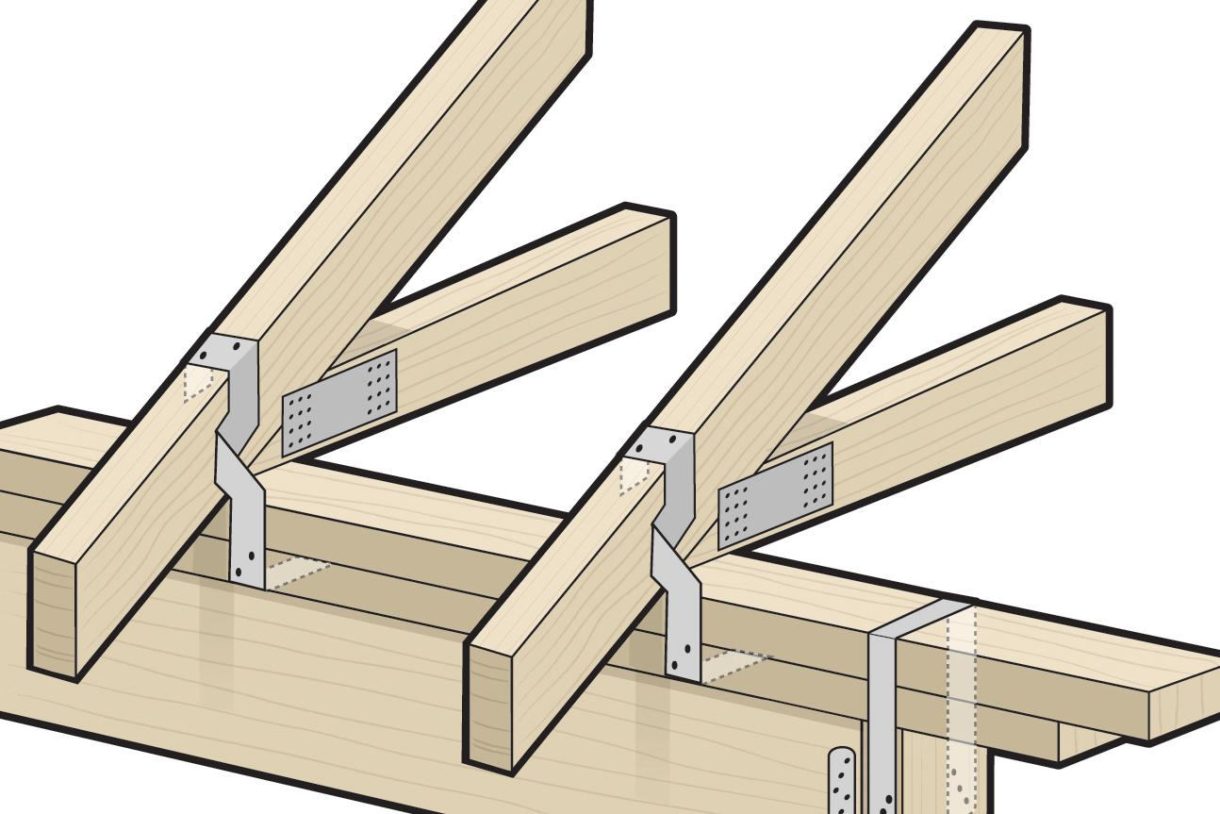Creating a Continuous Load Path to Strengthen Your Home
Creating a Continuous Load Path to Strengthen Your Home

The structure of your home is only as strong as its weakest connection. You may think the nails holding your home in place are strong enough, but the truth is high winds or an earthquake could topple you home in an instant. The best way you can strengthen your home against these potential disasters is to create a continuos load path from the roof to the foundation.
Why Are the Nails Not Strong Enough?
Nails are the most common connector used in the home building industry. Think about the structure of a nail. It has a flat head and a long shank that goes down into the wood. It’s strong enough to connect two pieces of wood together and keep them together for decades without fail. However, with a simple pry bar, you can withdraw the nail in the opposite direction and break the connection between the two pieces of wood.
High winds can cause destruction in a number of ways. They can create a pressure imbalance between the inside and outside of a home. This can cause the roof to be ripped off the structure. The nails holding the roof down pull out with little resistance because they are being withdrawn in the opposite direction of how they were nailed. The same thing happens when strong lateral winds hit the side of a building causing the wall to collapse.
Nails simply cannot create a strong enough connection to withstand high winds or the shaking of an earthquake. The solution is to use fasteners to create a continuous load path to strengthen the entire structure.
What Is a Continuous Load Path?
A continuous load path involves connecting every piece of your home’s structure like the links of a strong chain. It starts at the roof ridge and moves all the way down to the foundation.
- Metal brackets and straps, like those manufactured by Simpson Strong-Tie, attach to each piece of wood, connecting it to the surrounding ones.
- Structural pieces of plywood sheathing help to strengthen and brace the framing members.
- Blocking at strategic points helps keep the framing in position.
- Nailing in certain patterns helps prevent withdrawal.
All of these measures help the structure withstand upward and lateral pressure from high winds or the shaking of an earthquake.
How to Build a Continuous Load Path
If you are in the early stages of the home building process, now is the time to add the continuous load path elements to the structure, before the walls and roof get enclosed. Talk with your builder to get the work done.
Even, if you live in an existing home, you can still have a continuos load path built into the structure. It’s just going to take a bit more work to get it done. The person doing the work is going to need to be able to access the framing of the house and may need to replace your existing exterior sheathing with structural plywood instead.
If you want to learn more about building a continuous load path in your home, contact the HomeTech Handyman today.
HomeTechHandyman
Leave a Reply
About Me
The owner of Home Tech Handyman (Kevin Schlosser) has over 20 years of handyman, flooring, and specialized roofing experience. He is also very competent in networking, as well as audio/visual equipment and home automated technologies. He is fully insured in the state of Colorado. He also holds a blend of construction and in-home technology-related certifications like HBA certified Age-in-Place and Project Management certifications.







